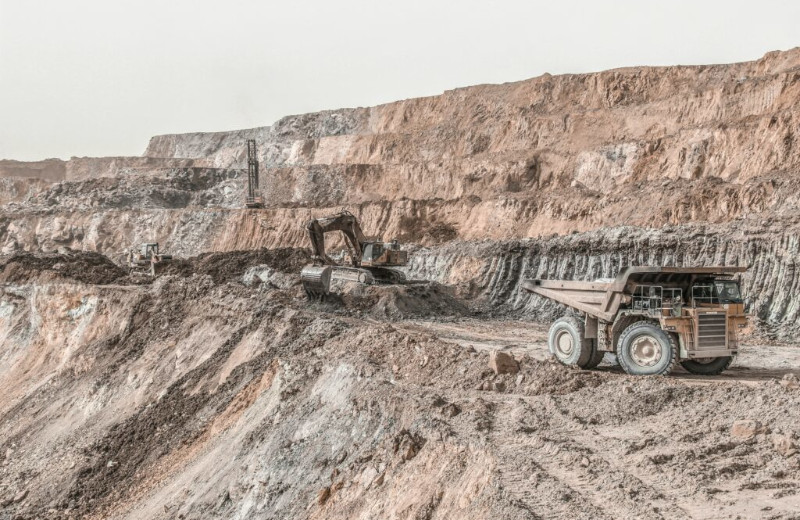As of January 2021, more than 100 countries had announced carbon neutrality plans and adopted ambitious energy transition targets for 2050-2060. As the world transitions from fossil fuels to renewable energy, the global minerals and metals landscape is also being transformed. Solar panels, wind turbines and batteries require significant inputs of lithium, cobalt, copper, graphite and other minerals. According to the International Energy Agency, even reaching the 2°C goal of the Paris Agreement will require “a quadrupling of mineral requirements for clean energy technologies by 2040”. The World Bank estimates that if the number of electric vehicles reaches 140 million in 2030, this will lead to a 1000% increase in total demand for many critical materials. Demand for germanium is expected to grow by 8,600% (Table 1).
Table 1. Demand growth for critical materials used for clean energy technologies
Solar power | Electric vehicles/ storage | Wind power | Projected demand growth | Target year | |
| Germanium | x | 8600% | 2050x | ||
| Bauxite & aluminium | x | x | x | 1200% | 2030 |
| Copper | x | x | x | 1000% | 2025 |
| Iron | x | x | x | 1000% | 2030 |
| Lead | x | x | x | 1000% | 2030 |
| Manganese | x | x | 1000% | 2030 | |
| Nickel | x | x | 1000% | 2030 | |
| Cobalt | x | 1000% | 2030 | ||
| Lithium | x | 1000% | 2030 |
So it is not surprising that the energy transition is causing a surge in demand for minerals for clean energy technologies, giving rise to concerns about the sources and security of supplies of critical materials. Since the 1990s, China has taken a dominant position in global critical materials supply chains. As a result, much analysis has focused on China, while the neighboring region of Central Asia has received scant attention. Although Central Asia was one of the Soviet Union’s main sources of metals and industrial minerals, it has been forgotten in current global critical materials analyses. Our new article reviews the Central Asian mineral resource base and assess its current and potential contributions to global supply chains.
Central Asia holds 38.6% of global manganese ore reserves, 30.07% of chromium, 20% of lead, 12.6% of zinc, 8.7% of titanium, 5.8% of aluminum, 5.3% of copper, 5.3% of cobalt, and 5.2% of molybdenum (Table 2). The Central Asian countries are also already among the top 20 global producers of many critical materials. In terms of individual countries, Kazakhstan has the world’s largest reserves and is the second-largest producer of chromium, which is used in wind turbines. The country’s reserves are estimated at 230 million metric tons, while global reserves amount to 570 million metric tons. Kazakhstan has the world’s fifth largest zinc reserves and eighth largest ore reserves, and is one of the top 20 countries in terms of proven copper, cadmium, and bauxite reserves.
Table 2. Proven reserves of critical materials by country (metric tons) and total share of global reserves (%)
Critical material | Proven reserves in Central Asia | Central Asia’s share of global reserves (%) |
Manganese | 951564557 | 38.6 |
Chromium (ore and concentrate) | 230390000 | 30.07 |
Lead | 25927215 | 20 |
Zinc | 46009736 | 12.6 |
Titanium | 395608070 | 8.7 |
Aluminum/bauxite | 1351999294 | 5.8 |
Copper | 40114164 | 5.3 |
Cobalt | 209139 | 5.3 |
Molybdenum | 855350 | 5.2 |
Iron ore | 20408052100 | 4.8 |
Nickel | 121700 | 1.2 |
Silver (kg) | 146525 | 1.2 |
Tin | 433636 | 0.9 |
Lithium | 72257 | 0.4 |
Graphite | 8360615 | 0.3 |
Silicon | 5102000 | 0.01 |
Tellurium | 2622,5 | 0.01 |
Source: Vakulchuk and Overland (2021).
Uzbekistan has the world’s 11th largest proven copper reserves. It has the potential to become a leading regional exporter of critical materials in the near future. Tajikistan is one of the top 20 countries in terms of proven reserves of zinc. Although Kyrgyzstan’s mineral resources are modest compared with those of its neighbors, it still has moderate to high geological potential for large-scale mining of nine critical materials.
Table 3. Production of critical materials in Central Asia (2019)
Critical material | Global production (metric tons) | Annual domestic production (metric tons) | Share of global production (%) | Global production rank |
|
| Central Asia |
|
|
Chromium | 407 89 986 | 5 191 920 | 12.73 | 2 |
Cadmium | 25 578 | 1 573 | 6.15 | 2 |
Selenium | 3 832 | 150 | 3.91 | 6 |
Zinc | 12 444 207 | 710 253 | 5.71 | 6 |
Lead | 4 767 954 | 88 500 | 2.47 | 7 |
Silver | 26 261 | 1 307.7 | 4.98 | 7 |
Copper | 20 613 942 | 883 554 | 4.29 | 7 |
Source: Vakulchuk and Overland (2021).
China shares a 3,300-km border with Central Asia and is a major contributor of investment in the region. Chinese companies already play prominent roles in critical materials extraction in Kyrgyzstan and Tajikistan where they own the majority of licenses. China is the main export destination of most of Kazakhstan’s critical materials output. While the EU and the United States are not among the main importers of Central Asian critical materials, Russia plays a notable role. Due to historical ties, Russia was the main importer of minerals from Kazakhstan in 1990-2000, before China took over this role after 2010. China greatly increased its imports of Kazakhstani minerals after 2017. The Chinese imports of molybdenum alone from Kazakhstan had grown by 444% in 2020 compared to 2017.
Although Southeast Asia, Western Africa, and Australia remain the largest suppliers of critical materials to China, Central Asia’s share in the supply of selected critical materials has been rising rapidly since 2015. Kazakhstan became the second-largest exporter of chromium to China after South Africa in 2019. Given the rapidly growing Chinese demand for critical materials, the lack of competition in Central Asia from other investors and buyers, and the region’s convenient and secure location for exports to China, Central Asian mineral exports to China will continue to grow.
To conclude, the importance of Central Asia lies mainly in the diversity of its mineral base, which includes mineable reserves of most critical materials for clean energy applications. Central Asia’s relative proximity to East Asian, European, South Asian, and Middle Eastern markets could be an advantage. This renders the region important in mineral economics, security of supply, and geopolitical perspectives alike. In sum, Central Asia is likely to become a new hotspot for mineral extraction and a major global supplier of selected critical materials for clean energy technologies.
The open access article can be downloaded here.
Roman Vakulchuk is a senior researcher and head of Climate Task Force at the Norwegian Institute of International Affairs. Follow him on Twitter @RVakulchuk.
Read more:

- Opinion
- By Leandro Vergara-Camus
- 14 July, 2023





